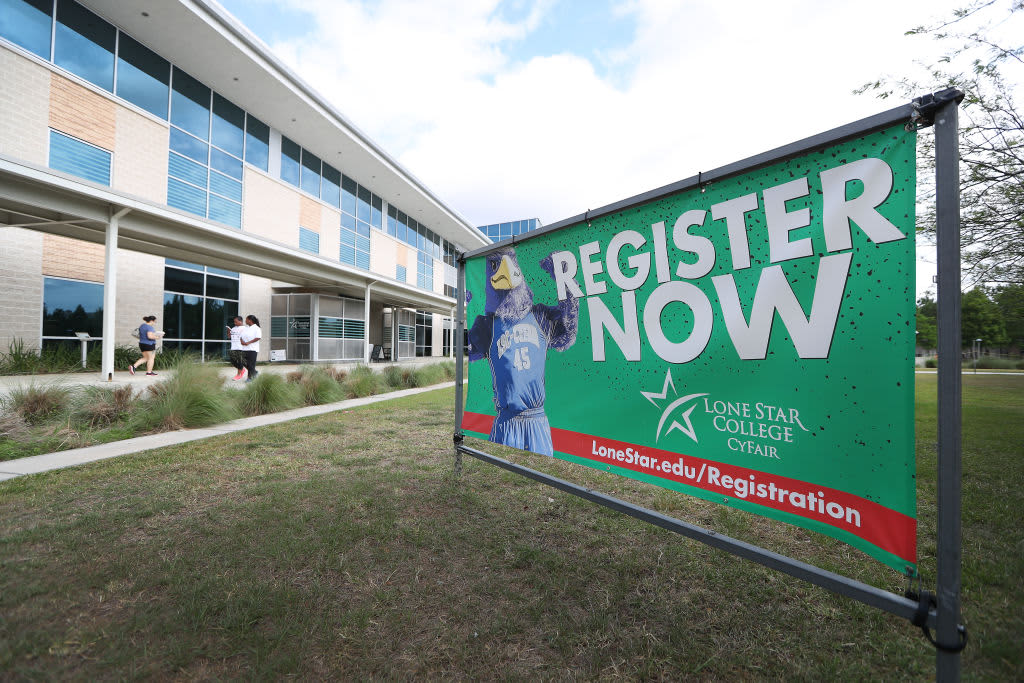College Proximity Widens Educational Achievement Gap
 Credit: Steve Gonzales / Houston Chronicle / Getty Images
Credit: Steve Gonzales / Houston Chronicle / Getty Images- A new study says students living in educational “deserts” with no nearby community college are less likely to earn an associate degree.
- Almost one-third of rural students live in an educational desert.
- Educational attainment patterns among rural students vary by race, ethnicity, and income level.
- Long-term gaps in degree attainment related to race and income persist and perpetuate inequalities, as students in deserts don’t catch up in later years.
Most students attend college close to home. Research tells us the median distance between home and college is 17 miles.
More than two-thirds of students (69%) stay within 50 miles. Among community college students, the vast majority of whom commute and don’t live on campus, 79% attend schools within 25 miles.
But how much does distance matter? For some students, it turns out, distance matters quite a bit. And for others, not so much.
That’s what the authors of a new working paper from the Annenberg Institute at Brown University, “Distance to Degrees: How College Proximity Shapes Students’ Enrollment Choices and Attainment Across Race-Ethnicity and Socioeconomic Status,” discovered when they set out to investigate the “relatively underexplored factor that may contribute to disparities in educational attainment by race-ethnicity and income.” Students, they found, are “sensitive to the distance they must travel” to attend public colleges and universities. But that sensitivity varies by race and ethnicity, dictating educational outcomes.
To determine the effects campus distance has on students, the authors analyzed Texas high school graduates from 2013-2017 and their enrollment patterns at two-year and four-year colleges.
They were particularly interested in students living in educational “deserts” — areas where the nearest community college was at least a 30-minute drive away.
Here’s what their research revealed: Overall, students living in a community college desert were less likely to complete an associate degree.
But that’s not all. White, Asian American, and higher-income students living in such a desert were, in fact, more likely to complete a bachelor’s degree. Why? Because they chose to attend a four-year college instead.
At the same time, Black, Latino/a, and lower-income students living in a desert were more apt to forgo college altogether, earning neither an associate degree nor a bachelor’s degree.
What’s more, these students don’t “catch up” and earn degrees in later years, the study found, resulting in “substantial long-term gaps in overall degree attainment by race-ethnicity and income in areas with limited postsecondary access.”
It also turns out educational deserts are rather commonplace. Rural students travel almost twice as far to a community college as their urban and suburban counterparts — an average of 25 minutes. And more than 30% of rural students live in a community college desert.
What’s keeping some students from traveling half an hour to a community college?
The study doesn’t say, but we can assume it’s a lack of personal or public transportation or perhaps the cost and time commitment associated with extensive travel. If someone’s working a full-time job, adding an hourlong round trip excursion to campus several times per week could be a deal-breaker.
The upshot is that “access to nearby community colleges plays a crucial role in facilitating higher education opportunities for [underrepresented minority and low-income] students, likely due to the affordability and accessibility that community colleges provide.”
In other words, having a college nearby matters. People living in counties with a regional public university have a higher degree attainment rate and better social mobility, another recent study determined.
Yet the public higher education sector has recently shrunk, albeit more slowly than the private sector.
From 2019-20 to 2020-21, the number of public four-year institutions declined by 2.3%, while the number of community colleges fell by 2.7%. Systemwide mergers and consolidations threaten to further reduce educational opportunities at public colleges in several states.
This trend promises to exacerbate the growing racial wealth gap insofar as it’s closely associated with educational attainment.
In this era of educational retrenchment, plopping additional community colleges in underserved rural areas seems unlikely. But investing more in online learning opportunities and robust technological infrastructures, a strategy the study neglects to address, might help level this playing field for students unwilling or unable to leave the desert.